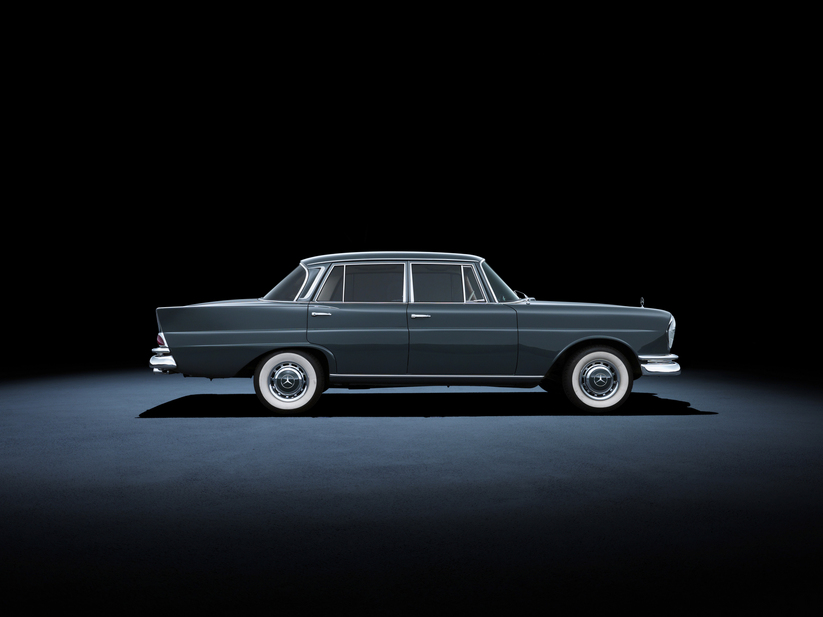|
Send this page to a friend! Fill in the form bellow | ||
news
The Mercedes-Benz S-Class Generations
The history of the most successful luxury saloon
The Mercedes-Benz S-Class Mercedes-Benz S-ClassGermany, 1972 > present6 series
Mercedes-Benz S-ClassGermany, 1972 > present6 series
293 versions
353 photos
1 video
is a byword for luxury, comfort, and driving safety. Because of that, this family of model series has had an enduring impact on the reputation of the German brand. Its long history stretches back to the beginning of the 20th century.
The tradition of the S-Class follows the philosophy of innovative technology and pioneering safety systems as well as solutions for greater comfort. It is these characteristics that mark each generation of the S-Class and set new standards in vehicle development and that make this model series for many the epitome of automotive engineering.
The sales figures speak for themselves: more than 3.5 million S-Class saloons have been sold since 1951, making this the world’s most successful vehicle in the high-end, luxury segment.
Mercedes-Benz 300 (W 186 / W 189, 1951 to 1962)
Launched in 1951, the prestigious Mercedes 300 (W 186) was the largest and fastest car in series production in Germany and the yardstick by which other luxury vehicles were measured. It became known as the “Adenauer Mercedes” because it was the favourite official car of German chancellor Konrad Adenauer.
Mercedes-Benz 220 (W 180, 1954 to 1956)
The next generation of the S-Class followed in 1954: the model 220 (W 180) was the first Mercedes-Benz six-cylinder car to feature a unitised body design. Its ultra-modern “pontoon” body offered previously unheard of levels of comfort. The single-joint swing axle, which had a low pivot point and had been developed for the Mercedes racing cars, ensured first-class handling.
Mercedes-Benz 220 SE (W 111, 1959 to 1965)
The “tailfin” models introduced in 1959 earned their nickname from the understated sight lines adorning the rear wings. The 111/112 model series represented a milestone in automotive history, as this was the first time that Béla Barényi’s safety shell had been put into service in a series-production car.
Mercedes-Benz 600 (W 100, 1963 to 1981)
In 1963, Mercedes-Benz launched the 600 model (W 100) which followed in the tradition of the Super Mercedes. This exclusive, top-of-the-range vehicle was available as a limousine with either a standard, or long wheelbase, or as a landaulet. Its extensive appointments reflected the pinnacle of what was technologically possible at the time.
Mercedes-Benz 280 SEL 3.5 (W 108, 1965 to 1972)
The timelessly elegant saloons of the 108/109 model series – the successor to the “tailfins” – made their debut in 1965. A highlight of this S‑Class generation was the 300 SEL 6.3 model that appeared in 1968. This top-of-the-range vehicle used the same powerful V8 engine as the model 600 and delivered performance on a par with sports cars.
Mercedes-Benz S-Class 116 series (1972 to 1980)
In 1972, the 116 model series set new standards with its modern design and extensive comfort and safety features. It was the first model series to officially be called the S-Class, though the letter S had long been used internally by Mercedes-Benz as a designation for high-end vehicles. In 1978, the 116 model series became the world’s first mass-production car to offer anti-lock brakes.
Mercedes-Benz S-Class 126 series (1979 to 1991)
Launched in 1979, the 126 model series had a clean, modern design that did away with the traditional chrome bumpers in favour of plastic ones. The 126 model series raised the bar with regard to aerodynamics, driving comfort, and safety. The air bag, for example, made its debut in this model series in 1981, as did the front passenger air bag in 1988.
Mercedes-Benz S-Class 140 series (1991 to 1998)
Introduced by Mercedes-Benz in 1991, the S-Class of the 140 model series delivered the maximum in comfort and performance. The 600 SE and 600 SEL were the first Mercedes-Benz saloons to be powered by a V12 engine. In 1995, the ESP® Electronic Stability Program was fitted as standard in the V12 versions – a world first.
Mercedes-Benz S-Class 220 series (1998 to 2005)
In 1998, the S-Class 220 model series arrived as the flagship vehicle for Mercedes-Benz. It was marked by a much leaner design than its predecessor. Innovations available in this S-Class included the COMAND control and display system, the DISTRONIC proximity-controlled cruise control system, Active Body Control (ABC, available from 1999), and the preventive occupant protection system PRE-SAFE (2002).
Mercedes-Benz S-Class 221 series (2005 to 2013)
In 2005, Mercedes-Benz introduced its integral safety concept in the 221 model series. In 2009, the 221 model series became the first luxury Mercedes-Benz model to feature a hybrid drive – at the same time, the S 400 HYBRID became the first series-production car to be fitted with a lithium-ion battery.
Contribute
latest news






























